#ai for workflow automation
Explore tagged Tumblr posts
Text
AI Customer Support: Enhancing the Customer Experience
AI has massive potential for businesses in all niches. Perhaps its most transformative niche, however, is in making customer service better. Many companies have already embraced AI customer support. In fact, when you contact customer support, you might be talking to an AI assistant without even knowing it! AI has immense power to help businesses provide faster customer service. Today, we explore just some ways AI is changing how companies help their customers.
How AI Customer Support Makes Service Better
As we’ve noted before on the blog, AI is best thought of as a super-helpful digital assistant that never gets tired. Anyone who has worked in customer service knows how invaluable that could be. AI can answer customer questions 24 hours a day, 7 days a week. Now, picture your customers enjoying that constant access. No more waiting until Monday or after lunch to get the help they need.
Of course, generative AI in customer experience is still a tool, not a master. It can’t understand every single niche customer query it encounters. However, AI assistants can handle many common customer questions right away. Think of simple, common queries like “Where’s my package?” or “What is my account balance?”.
AI can help with that in seconds. This means customers get answers faster and don’t have to wait for a human agent to become available. For those with complex issues to address, AI customer support can forward the matter to a human to deal with properly.
Real Examples of Generative AI in Customer Experience
You have already seen generative AI in customer experience in action. Think of those pop-up chat boxes that are now common on most websites. These chatbots use generative AI to understand customers’ questions and provide helpful answers.
Big companies like Amazon and Apple are already using AI to figure out what customers might need help with. Often before they even ask! For example, if you’ve bought something recently, the AI might show you tracking information as soon as you contact customer service.
As you can see, the results are subtle and aren’t always a case of AI ‘pretending to be customer support.’ Instead, AI has become a useful tool to simplify the support cycle while still allowing for human help where needed.
Making Things Personal with AI Customer Support
Personalization has become a key marketing tool. People don’t want to see things that are sort of relevant to them. They want direct, relevant and personal suggestions.
AI can ‘remember’ previous conversations with individuals. This allows it to personalize responses and other cues for the user. If you’ve talked to customer service before about your shoe size, the AI will remember that next time you shop. This makes the experience feel more personal, like talking to someone who knows you.
AI can also offer smart suggestions based on what customers usually buy. It can recommend other things people may like and easily offer that coveted personalized experience.
Helping Human Agents Do Better

So, AI isn’t a replacement for a great customer service team. It’s another team member who helps them work better. When customers have complicated problems, AI can quickly give the human agents all the important information they need.
This means the agent can focus on solving the problem instead of searching for information. The AI agent can offer advice directly when the inquiry is simple and straightforward. This leaves the human agent ready to help the next person in the queue with a complex query.
Making Sure Customers Are Happy
Using generative AI in customer experiences also lets businesses police their service. AI can analyze customer feedback, reviews and even the tone of voice in phone calls to understand how customers really feel.
The quicker you can spot a customer service issue, the better you can respond to it. It’s also useful to tell who is simply ‘having an opinion’ and where there is a genuine service issue. This lets you take any steps needed to address the matter.
Nor has generative AI in customer experiences reached its full potential yet. Developers are working hard to help AI customer support better understand emotion, solve complicated problems and predict customer needs. They’re also working hard to improve how it communicates. There’s a bright future ahead for human-AI collaboration.
Making AI Customer Support Work Better for Everyone
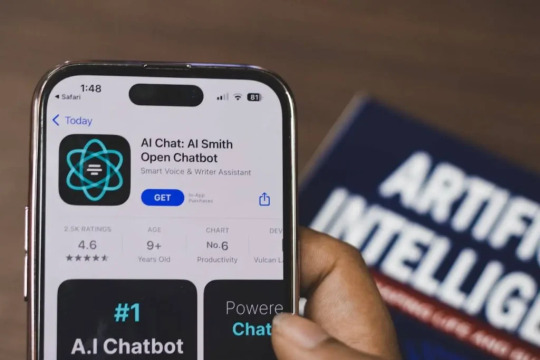
Using generative AI in customer support has benefits for everyone concerned. For business owners, AI in customer service means:
Helping more customers without hiring more staff
Keeping support services running 24/7 without extra cost
Understanding customer needs better
Making sure problems get fixed faster
On the other side, for customers, it means:
Getting help right away, any time of day
Not having to explain the same problem multiple times
More personalized service
Faster solutions to common problems
In short, the future of generative AI in customer experience is burning brightly. The key for businesses looking to implement AI customer support is to start small and build from there. Trial a simple chatbot trained on your most common service questions. Begin to use AI tools to organize your customer information.
Once you have a few implementations in place, you can add more as you learn what works. And always remember: AI works best when it’s part of a team. The goal is to make things better for your customers, not to replace human connection completely.
AI customer support has immense potential to reshape customer service for the better. It’s helping businesses provide faster, more personal service while making things easier for both customers and employees.
As AI keeps getting better, we can expect even more improvements in how generative AI customer experiences help businesses help their customers. If you’re ready to embrace the potential of AI customer support for your business, reach out to AI-First Mindset™ today to help you get started.
0 notes
Text

maybe i dont have the 'growth mindset' necessary to work in the industry but my first thought upon reading this was "kill yourself"
#okay i admit i dont really know how theyre incorporating “AI” into the workflow but as of now i cant imagine its better than automating#like yeah you just automate your workflow. everyone does it. why “AI”.#its just extremely annoying to see even high level educational institutions just throw this shit in. bro its been out for like 3-4 years...#everything looks like a nail type shit
245 notes
·
View notes
Text
Manus AI: 5 Game-Changing Ways to Transform the Way You Work
Did you know the average worker spends 30% of their week on boring tasks? This really slows down work. Manus AI is here to fix that. It’s a smart artificial intelligence tool that makes work better, cuts down on boring tasks, and helps teams be more creative. Manus AI uses smart tech to help you write, summarize, plan, and talk better. It makes emails, blogs, and reports fast. It also shortens…
#AI Productivity Tools#Artificial Intelligence at Work#Automation technologies#Cutting-Edge AI Solutions#Digital Transformation Solutions#Enhancing Workflow Efficiency#Future of Workspaces#Manus AI#Next-Gen Work Tools#Workplace Innovation
0 notes
Text
Unlock your creative superpowers with AI prompting! ⚡ Whether you're a blogger, YouTuber, or solopreneur, learn how to craft perfect AI prompts for stunning content and visuals — fast, easy, and fun. Dive in and level up your creativity today! 🚀 #AI #ContentCreation #DigitalMarketing
#advanced AI prompting#advanced AI prompting strategies#AI and digital marketing#AI audio content#AI audio tools#AI automation in content#AI blog writing#AI brainstorming#AI branding#AI content automation tips#AI content consistency#AI content consistency methods#AI content creation#AI content creation mistakes to avoid#AI content creation workflow#AI content creator tips#AI content curation#AI content ethics#AI content generation#AI content ideas#AI content innovation#AI content marketing#AI content optimization#AI content optimization techniques#AI content planning tips#AI content quality#AI content scaling#AI content strategy#AI content tips#AI content trends
0 notes
Text
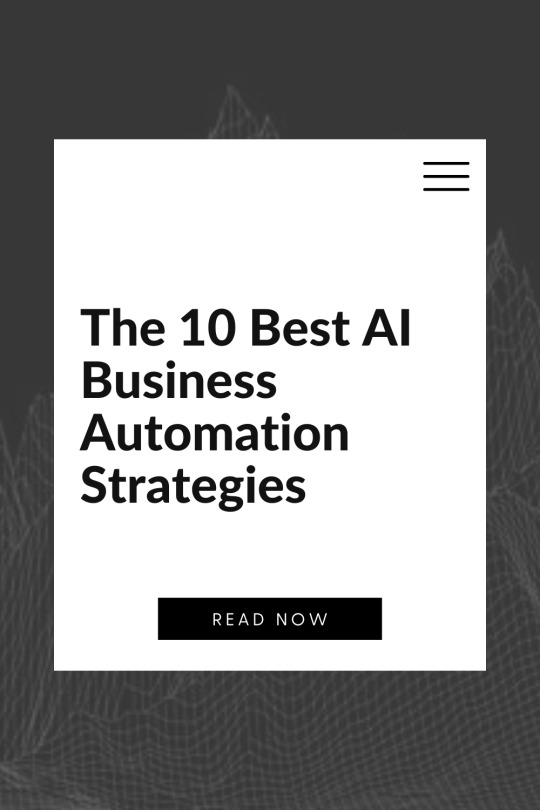
The 10 Best AI Business Automation Strategies
In today’s world of businesses, companies are under constant pressure to do more with less. Whether it’s streamlining operations, improving decision-making, or delivering greater value to customers, companies must constantly adapt. And increasingly, they’re turning to artificial intelligence to make it happen.
AI-driven business solutions are becoming more accessible, more powerful, and more deeply integrated into core business functions. From automating repetitive tasks to deploying intelligent agents that can make decisions on their own, AI is helping teams boost productivity and focus on what matters most. Whether you are leading a lean startup or running a global enterprise, understanding how to apply AI in meaningful ways is quickly becoming a must-have skill.
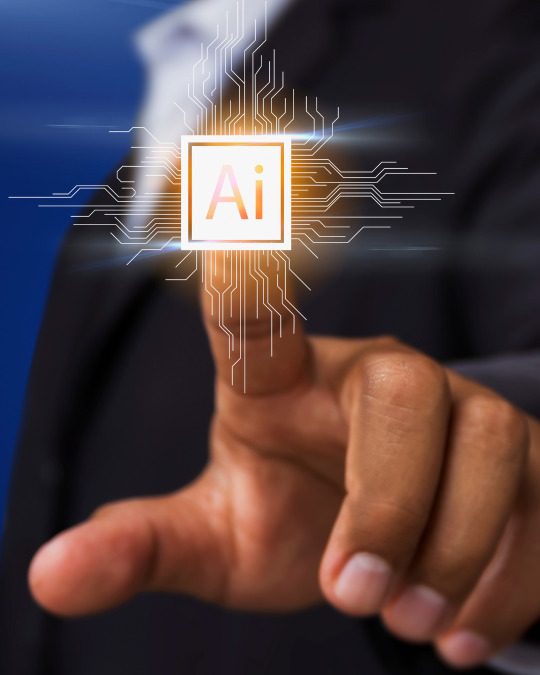
The 10 AI Strategies That Work
1. Intelligent Process Automation (IPA)
Intelligent Process Automation (IPA) Intelligent process automation combines robotic process automation (RPA) with AI technologies such as machine learning, natural language processing, and computer vision. Unlike traditional RPA which handles repetitive, rule-based tasks, IPA adapts to changes in data and learns over time.
Businesses can apply IPA to tasks like invoice processing, customer onboarding, and document classification. For example, a major insurance company used IPA to automate claims processing, reducing average handling time from 15 days to under 48 hours. By doing so, they reduced operational costs, minimized errors, and increased customer satisfaction. When paired with predictive analytics, IPA becomes even more powerful, enabling organizations to foresee potential issues and resolve them proactively.
2. AI-Enhanced Customer Service
AI-Enhanced Customer Service Customer expectations are at an all-time high, and businesses are under pressure to deliver fast, accurate, and personalized support. AI-driven business solutions, particularly chatbots and virtual assistants, are revolutionizing customer service by offering 24/7 support that improves with every interaction.
Take the case of a telecom company that deployed AI chatbots to handle basic inquiries. Within six months, their customer service wait times dropped by 60%. Agentic AI takes this to the next level by not just responding to queries but proactively anticipating customer needs. It can guide customers through complex processes, recommend solutions, and escalate issues intelligently. This frees up human agents to focus on higher-level tasks and fosters deeper customer relationships.
3. Predictive Sales and Marketing Automation
Predictive Sales and Marketing Automation Sales and marketing teams can leverage AI to uncover hidden patterns in customer behaviour and deliver the right message at the right time. AI models can analyze vast amounts of data to identify which leads are most likely to convert, when to reach out, and what content will resonate most.
A mid-sized e-commerce company integrated predictive analytics into their marketing platform and saw a 20% increase in conversion rates within the first quarter. Tools powered by AI can automate A/B testing, segment audiences more precisely, and personalize outreach across channels. This not only boosts conversion rates but also optimizes marketing spend by focusing efforts where they will yield the highest return.
4. Autonomous Financial Forecasting
Autonomous Financial Forecasting AI-driven financial planning and analysis tools are changing the game for CFOs and finance teams. These systems use historical and real-time data to generate forecasts, detect anomalies, and provide recommendations on budgeting and resource allocation.
For instance, a multinational manufacturing firm used AI to forecast demand fluctuations and adapt procurement strategies accordingly, saving over $10 million annually. Agentic AI systems can go even further by autonomously simulating different financial scenarios and adjusting models based on new inputs. This dynamic approach to financial planning reduces risk and allows organizations to respond quickly to changing economic conditions.
5. Talent Acquisition and Human Capital Optimization
Talent Acquisition and Human Capital Optimization Recruiting, onboarding, and managing talent is a critical function that benefits immensely from AI automation. AI can sift through resumes, rank candidates based on job fit, and even conduct preliminary interviews using sentiment analysis.
A tech startup adopted AI-powered recruitment software and cut their time-to-hire in half while improving the quality of hires. Once employees are onboarded, AI can monitor performance metrics, identify training needs, and predict attrition. This enables HR teams to take proactive steps to retain top talent and build a more engaged workforce. AI-driven platforms also ensure that workforce planning is data-informed and aligned with business goals.
6. Supply Chain Optimization
Supply Chain Optimization In an increasingly globalized economy, supply chain resilience is essential. AI tools can predict demand, optimize inventory, and identify potential disruptions before they occur. From logistics to procurement, AI ensures smoother operations by providing real-time insights and automation.
During the pandemic, a major retailer used AI to reconfigure their supply chain in real time, avoiding massive inventory losses. Agentic AI can autonomously reroute shipments, negotiate with suppliers, or trigger contingency plans based on environmental or market changes. This makes the supply chain more adaptive and responsive to unforeseen challenges.
7. Document and Data Management
Document and Data Management Businesses deal with an enormous amount of unstructured data: emails, contracts, reports, and more. AI-powered document management systems can automatically categorize, summarize, and extract relevant information from these sources.
A law firm integrated AI into their document system and reduced legal research time by 70%. This drastically reduces the time employees spend searching for documents or inputting data manually. It also enhances compliance and audit readiness by ensuring records are stored and retrieved systematically. In legal and financial sectors, such AI tools are becoming indispensable.
“AI is the defining technology of our time. Every business process will be reimagined with AI.”
— Satya Nadella (CEO of Microsoft)
8. Personalized Product and Service Delivery
Personalized Product and Service Delivery Personalization has become an expectation. AI algorithms can analyze customer preferences, browsing behaviour, and purchase history to tailor recommendations and experiences.
Netflix’s recommendation engine is a classic example, responsible for over 80% of the content users watch. In healthcare, AI can deliver patient-specific treatment suggestions based on medical history and genetic data. The future of AI-driven business solutions lies in hyper-personalization that adapts to individual needs across all touchpoints.
9. Risk Management and Compliance Automation
Risk Management and Compliance Automation Regulatory compliance is complex and time-consuming. AI can automate the monitoring of transactions, communications, and workflows to ensure they align with regulatory standards.
A global bank used AI to monitor trading activities and flag suspicious behaviour, improving compliance efficiency by 40%. Agentic AI adds a layer of intelligent decision-making by adapting to new regulations as they are introduced. It flags potential risks, recommends remediation actions, and provides explanations for audit trails. This is particularly vital in sectors like finance, healthcare, and energy where compliance is heavily scrutinized.
10. Agentic AI for Autonomous Business Decision-Making
Agentic AI for Autonomous Business Decision-Making Perhaps the most forward-looking strategy is the deployment of agentic AI systems that can act independently within defined parameters. These systems learn from experience, set their own goals, and carry out complex tasks without constant human intervention.
For example, a SaaS company implemented agentic AI to autonomously manage and optimize user onboarding flows. It led to a 25% increase in user activation and retention with minimal human oversight. Agentic AI might manage a product launch, adjust a marketing strategy based on competitor moves, or optimize internal processes across departments. The potential for autonomy means businesses can operate more efficiently, reduce human error, and scale operations like never before.
How to Start: Implementing AI Automation in Your Business
If you’re ready to start integrating AI automation into your business but unsure where to begin, follow these practical steps:
1. Identify a High-Impact Use Case
Start small, but think smart. Look for a single process in your business that is repetitive, time-consuming, or prone to human error. This could be anything from manual data entry and inventory tracking to responding to customer inquiries. Choosing a task with clear pain points makes it easier to measure results and build a compelling case for broader adoption.
Pro tip: Ask your teams where the bottlenecks are. The best automation opportunities often hide in plain sight.
2. Evaluate AI Tools That Fit Your Needs
Once you know what to automate, the next step is choosing the right technology. Today’s AI landscape is rich with platforms that offer automation capabilities from workflow bots to natural language processing and predictive analytics. Focus on tools that are accessible (think low-code or no-code) and designed for your industry or business size.
Look for: Scalability, ease of integration with existing systems, security features, and vendor support.
3. Launch a Pilot Project and Measure Everything
Before a full rollout, test your solution on a smaller scale. A pilot allows you to validate the AI’s performance and fine-tune the implementation. Define clear metrics from the start, such as time saved, error rates reduced, or improvements in response time to gauge the success of the pilot.
Don’t skip this step. It helps prevent costly missteps and builds internal confidence in the technology.
4. Iterate, Optimize, and Scale
Use the insights from your pilot to improve the system: tweak the AI model, adjust workflows, and gather feedback from users. Once the process is refined and delivering measurable results, begin expanding it to other departments or tasks. Automation success grows best when it's built gradually and thoughtfully.
Start a playbook. Document what worked and what didn’t so you can replicate success elsewhere.
5. Train Your Team and Build a Culture Around AI
Technology is only half the equation, people are the other half. Ensure your employees understand how to use the new tools and why automation is being introduced. Host workshops, provide hands-on training, and clarify how AI will support (not replace) their roles.
Empowered teams adopt faster. Make training a continuous process, not a one-time event.
The future of AI isn’t something to wait for, it’s already here, quietly transforming how business is done every minute. The only question is: will you be ahead of the curve or racing to catch up?
With these 10 strategies, you’ve got a blueprint to lead with confidence, intelligence, and speed.
Learn more about DataPeak:
#factr#datapeak#technology#artificial intelligence#ai#machine learning#agentic ai#ai-driven business solutions#machine learning for workflow#saas#automation#artificialintelligence#ai solutions for data driven decision making#ai business tools#aiinnovation#no code platforms#digital trends#digitaltools#digital technology#datadrivendecisions#dataanalytics#data driven decision making#ai driven business solutions#ai for business efficiency#ai business solutions#ai platform for business process automation
0 notes
Text
How to Use AI Scheduling Tools to Delay Distractions and Maintain Focus
How to Use AI Scheduling Tools to Delay Distractions and Maintain Focus Protect Your Time Like It’s Your Most Valuable Asset… Because It Is! Let’s get honest: most of us don’t lose productivity because we’re lazy, we lose it to the constant ping-ping-ping of modern life. DMs, surprise calls, emails that demand “just 5 minutes” of your time (which turn into 30). It’s chaos disguised as…
#AI automation for entrepreneurs#AI automation for service-based businesses#AI business strategy#AI strategies for business growth#AI tools for solopreneurs#AI workflow optimization#AI-driven content creation for entrepreneurs#AI-powered business coaching#Business Growth#Business Strategy#Entrepreneur#Entrepreneurship#How to implement AI in small business operations#Lori Brooks#Productivity#Small business AI tools#Technology Equality#Time Management
0 notes
Text
AI-Powered Automation and Smart Business Operations
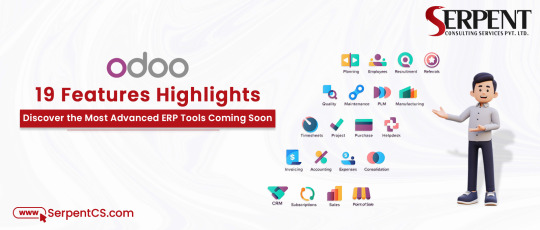
The upcoming Odoo 19 release is set to redefine how businesses automate their processes with intelligent, AI-driven tools. From AI-powered server actions that update fields or trigger complex workflows using simple natural language prompts, to AI-enabled text fields in Odoo Studio that auto-generate content from existing data — the platform makes automation more accessible than ever. Additionally, the new AI support chatbot within Odoo 19 provides contextual help and instant suggestions, enhancing internal productivity and customer support interactions alike. All these features showcase how deeply artificial intelligence is being embedded into everyday business operations with Odoo 19.
0 notes
Text
Harnessing Agentic AI: Transforming Business Operations in 2025
Introduction
Artificial Intelligence (AI) has evolved significantly, and in 2025, we are witnessing the rise of Agentic AI in Business—an advanced form of AI capable of autonomous decision-making, problem-solving, and self-learning without constant human intervention. This new wave of AI is set to revolutionize business operations across industries, enhancing efficiency, productivity, and innovation.
In this blog, we explore how businesses can harness Agentic AI to gain a competitive edge, streamline workflows, and enhance customer experiences.
Understanding Agentic AI
What is Agentic AI?
Agentic AI refers to artificial intelligence systems that operate with a high degree of autonomy, making strategic decisions, adapting to dynamic environments, and executing tasks without explicit instructions. Unlike traditional AI models that rely on predefined rules, Agentic AI learns, evolves, and self-corrects based on real-time data and experiences.
Key Features of Agentic AI
Autonomous Decision-Making: Can analyze complex situations and make data-driven choices.
Self-Learning Capabilities: Continuously improves performance without human intervention.
Context Awareness: Understands situations and adjusts actions accordingly.
Interoperability: Can integrate seamlessly with various business systems.
For businesses looking to implement Agentic AI solutions, TechGeekz Services offers customized AI-driven automation solutions tailored to diverse industry needs.
How Agentic AI is Transforming Business Operations
1. Enhancing Business Efficiency
Agentic AI optimizes business processes by automating repetitive and time-consuming tasks, allowing employees to focus on strategic initiatives.
How It Works:
Automates document processing and data entry.
Improves supply chain logistics by predicting inventory needs.
Enhances workflow management with intelligent scheduling.
➡ Explore TechGeekz’s AI-powered business automation tools to improve efficiency in your organization.
2. Revolutionizing Customer Experience
With Agentic AI, businesses can offer hyper-personalized customer experiences that increase engagement and satisfaction.
Key Benefits:
AI Chatbots: Provide real-time support with human-like responses.
Predictive Analytics: Forecast customer preferences and behaviors.
Sentiment Analysis: Understand customer feedback to refine services.
3. AI-Powered Cybersecurity
As cyber threats become more sophisticated, Agentic AI plays a crucial role in security operations by detecting vulnerabilities and preventing attacks in real time.
AI Security Features:
Detects and mitigates fraud automatically.
Monitors systems for suspicious activities.
Strengthens authentication with biometric and behavioral analysis.
💡 Protect your business with TechGeekz’s AI cybersecurity solutions.
4. Streamlining Human Resource Management
Agentic AI is transforming HR processes by making recruitment, employee engagement, and performance evaluations more efficient.
How Businesses Benefit:
AI-powered applicant screening saves time in hiring.
Employee performance tracking ensures better workforce management.
AI-driven learning platforms personalize training programs.
🔍 Explore TechGeekz’s HR automation solutions to revolutionize talent management.
5. Optimizing Marketing and Sales
AI is enabling businesses to make data-driven marketing decisions, leading to increased conversions and customer loyalty.
Agentic AI in Marketing:
Automates personalized email campaigns.
Predicts purchasing behavior with AI analytics.
Enhances ad targeting through real-time data analysis.
📊 Leverage TechGeekz’s AI marketing solutions for a data-driven sales strategy.
The Future of Agentic AI in Business
As we move further into 2025, businesses that embrace Agentic AI will enjoy enhanced agility, cost savings, and improved decision-making. The future will see AI evolving into more sophisticated models with increased ethical and regulatory considerations.
🔗 For businesses ready to integrate AI-driven transformation, TechGeekz Services provides end-to-end AI implementation solutions.
Conclusion
Agentic AI is reshaping the business landscape, offering organizations unprecedented opportunities to enhance efficiency, security, and customer experiences. By adopting AI-driven solutions, businesses can stay ahead of the competition and drive long-term success.

Forbes: How AI is Transforming Business
MIT Technology Review: AI’s Role in the Future of Business
TechGeekz’s AI Automation Solutions
TechGeekz’s AI-Powered Cybersecurity
TechGeekz’s AI Marketing Solutions
#Agentic AI#AI agents#Autonomous systems#Generative AI#Reinforcement learning#Deep learning#Business intelligence#Cybersecurity automation#Enterprise workflow automation#Industrial automation#Agent-based process management#AI orchestration#Digital twins#AI in Finance#Emerging technology 2025
1 note
·
View note
Text
The Invisible Assistant: How AI Is Transforming the Modern Desk Job
(A dramatized account based on common use cases seen in office and administrative work For Maya Patel, being a project coordinator at a mid-sized marketing agency used to mean drowning in spreadsheets, chasing down meeting invites, and copy-pasting status updates across half a dozen platforms. “It wasn’t glamorous,” she said. “It was digital janitorial work, basically.” Then her company…
#AI assistants#AI in the workplace#Claude AI#desk job automation#digital transformation#ethical AI#human AI collaboration#modern work#office workflow#productivity tools#report automation#scheduling tools#workplace efficiency
0 notes
Text
How to Use Gemini CLI with MCP Tools: Full Setup & Workflow
youtube
Just finished a deep dive into using Gemini CLI with advanced MCP integrations like Context7 and Task Master. If you're into AI tools, automation, and developer workflows, this is something you’ll want to check out.
Watch the full tutorial here: [link]
Open to feedback, suggestions, or how others are using Gemini CLI with MCPs!
#gemini cli#mcp tools#ai tutorial#google gemini#dev tools#terminal#coding workflow#automation#openai#Youtube
0 notes
Text
Webinar | From Bottlenecks to Launchpads: How AI Is Transforming Product Compliance in Manufacturing
Is compliance slowing down your product launch? In this exclusive webinar, Certivo CEO & Founder Kunal Chopra unveils how AI is reshaping compliance from a bottleneck into a launch accelerator.
From eliminating manual document reviews to spotting expired declarations instantly, learn how top manufacturers are using AI to automate regulatory operations, reduce risk, and get audit-ready in hours.
🚀 Watch the full webinar here: https://youtu.be/r0J31TZYvc4
🌐 Learn more: https://www.certivo.com
🔖 Stay #AlwaysCompliant and #AlwaysMarketReady
#AI automation for regulatory compliance workflows#How manufacturers use AI for compliance efficiency#Reduce compliance risk with AI in manufacturing#Compliance automation webinar for supply chain leaders#Audit-ready document validation using AI#PFAS and EUDR compliance automation tools#Streamlining product compliance in medtech and EV#AI-powered compliance ROI for manufacturers#Build supplier risk matrices using AI#7-day pilot for AI compliance implementation
0 notes
Text
I recently read about the Baxter-Vantive Spin-Off and it reminded me of a 2008 candy company M&A - here's why.
#AI and Automation Gaps#Baxter-Vantive Spin-Off#Cross-Functional Misalignment#Hansen Fit Score#Integration omplexity#M&A#Master Data Fragmentation#procurement#supply chain#User Adoption and Change Fatigue#Vendor Management Complexity#Workflow Disruption and Governance Gaps
0 notes
Text
AI and Automation in June 2025: Top Enterprise Shifts
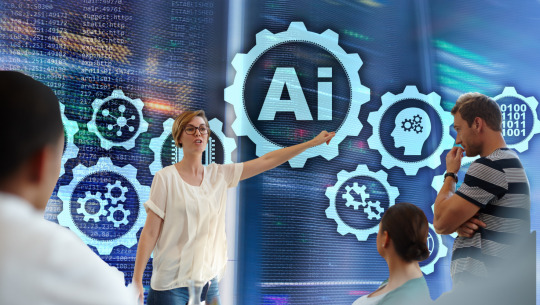
June 2025 marked a turning point in enterprise technology, where artificial intelligence and automation moved from experimental to essential. In this blog, Infosprint Technologies breaks down six significant AI and automation developments every business leader needs to know — from OpenAI’s release of the reasoning-driven o3-Pro model to Anthropic’s launch of Claude Gov, a government-grade secure AI platform.
We also explore how giants like Salesforce, AWS, SAP, UiPath, and IBM are embedding generative AI into real-world business systems. Think: bots that navigate complex UIs, AI that drafts emails from your data, and cloud-based RPA tools that your HR or finance team can build without code.
Key Highlights:
OpenAI’s o3-Pro is up to 80% cheaper, making deep AI accessible to SMBs.
Anthropic’s Claude Gov shows the future of regulated, secure AI for defense and government.
Salesforce and SAP are enabling AI agents to interact with CRMs and ERP systems in real time.
UiPath and IBM are moving RPA from IT-only tools to enterprise-wide automation frameworks.
The rise of agentic AI means bots now decide, adapt, and act — not just follow rules.
Whether you’re a CIO, CTO, or business strategist, this blog offers a roadmap for navigating AI transformation in Q3 and beyond.
#ai and automation in june 2025#enterprise AI integration#generative AI partnerships#agentic AI applications#cloud-based automation tools#AI workflow automation#secure AI deployment#what is agentic AI#how Claude Gov works#benefits of o3-pro#RPA for compliance#AI in ERP systems
0 notes
Text

Transform FSM with AI: Greater Efficiency & Happy Customers
LionO360 FSM uses predictive scheduling & smart dispatching to optimize operations, boost technician efficiency, and enhance customer experience.
0 notes
Text
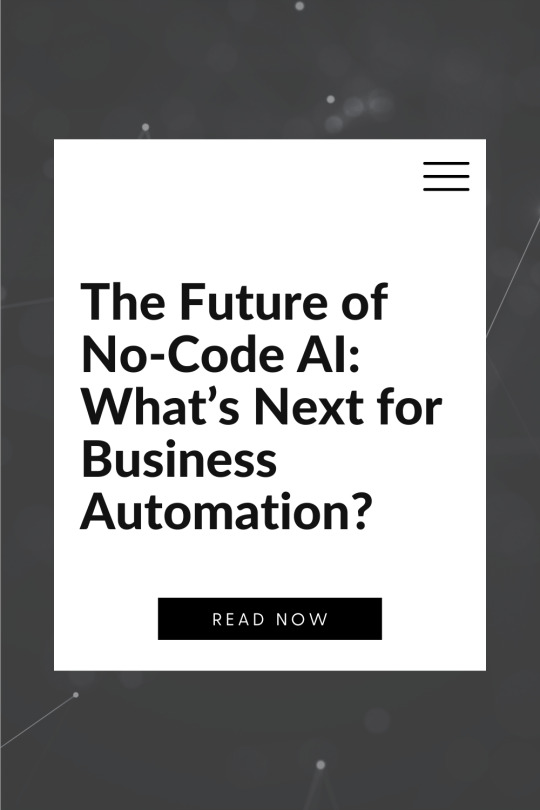
The Future of No-Code AI: What’s Next for Business Automation?
In a world where every second counts and competition grows fiercer by the day, the demand for speed, efficiency, and agility in business operations has never been higher. Yet, for many organizations, one major hurdle still stands in the way of true digital transformation: the bottleneck between ideas and implementation. Traditionally, building AI-driven solutions required specialized knowledge in programming, data science, and machine learning. However, the rise of no-code platforms is radically changing that narrative.
No longer confined to the IT department or data science labs, artificial intelligence is becoming accessible to anyone with a business problem to solve. Thanks to no-code AutoML for data analysis and AI-driven data workflow automation, employees across departments, marketing teams, operations managers, HR specialists, and more can now build and deploy intelligent systems without writing a single line of code.
This shift is more than just a passing trend; it signals the beginning of a new era where AI is democratized and woven into the fabric of everyday business processes. But where is this movement heading, and what does the future hold for no-code AI and business automation?

What is No-Code AI?
At its core, no-code AI is the integration of artificial intelligence into user-friendly platforms that allow individuals to design, test, and deploy AI solutions through intuitive interfaces rather than programming languages. Whether it's drag-and-drop builders, visual logic trees, or templated workflows, these tools enable users to interact with complex machine learning models and automation engines with ease.
No-code AutoML (automated machine learning) for data analysis is a prime example. It enables users to upload datasets, select target variables, and automatically train predictive models that deliver insights, all without any manual coding or algorithm tuning. These tools handle everything from feature selection to model evaluation, simplifying what was once a complex, highly technical process.
Pair that with AI-driven data workflow automation where AI triggers, manages, and optimizes business processes and you get a powerful combination that transforms how organizations operate.
Why No-Code AI Matters Now
The rise of no-code AI is fuelled by several converging trends:
Data Explosion: Businesses generate and collect more data than ever before. Making sense of it quickly is no longer optional; it’s a competitive necessity.
Talent Shortage: Skilled data scientists and machine learning engineers are in high demand and short supply. No-code solutions bridge this gap by enabling non-technical users to solve problems independently.
Pressure to Innovate: Companies are under increasing pressure to innovate, streamline operations, and personalize experiences. No-code AI accelerates the path from concept to execution.
Remote and Agile Work: The shift to hybrid and remote work environments has emphasized the need for agile, cloud-based tools that can be used by distributed teams without relying on centralized IT support.
Together, these factors make a compelling case for why the future of business automation is intrinsically tied to no-code AI.
Key Applications of No-Code AI Today
No-code AI is already reshaping industries in practical, impactful ways:
1. Customer Experience Optimization
Marketers use AI-powered platforms to personalize email campaigns, segment audiences, and predict customer churn—without waiting on data teams. By leveraging no-code AutoML for data analysis, marketing professionals can quickly identify which messages resonate, which channels perform best, and when customers are most likely to engage.
The Future of AI in Customer Experience Optimization
AI-powered virtual assistants will engage customers with real-time, emotion-aware conversations.
Hyper-personalized content generation will dynamically tailor marketing strategies based on behavioural data.
Predictive AI will anticipate customer needs, adjusting campaigns without manual intervention.
2. Sales Forecasting and Lead Scoring
Sales managers build predictive models to forecast revenue or score incoming leads based on historical conversion data. These insights drive better pipeline management and help focus resources on high-impact opportunities.
The Future of AI in Sales Forecasting and Lead Scoring
AI-driven CRM tools will automatically adjust strategies based on customer behaviour.
Predictive coaching will refine outreach efforts, analyzing real-time sales signals.
Automated contract negotiation tools will optimize pricing and deal structures dynamically.
3. Supply Chain and Inventory Management
Retailers and logistics firms use AI-driven data workflow automation to optimize inventory levels, anticipate demand shifts, and reduce stockouts or overages. These workflows often run continuously in the background, automatically adjusting based on real-time data.
The Future of AI in Supply Chain and Inventory Management
AI-powered digital twins will simulate and optimize logistics.
Autonomous inventory management will adjust stock levels proactively to reduce waste.
Robotics and AI-driven warehouses will handle fulfillment operations with minimal human involvement.
4. Human Resources and Talent Analytics
Recruiters and HR managers use no-code AI to analyze resumes, predict employee turnover, and understand engagement patterns across the workforce. This leads to better hiring decisions, higher retention, and a more responsive HR function.
The Future of AI in Human Resources and Talent Analytics
AI will personalize career path recommendations based on an employee’s skills and goals.
AI-driven workplace monitoring will predict engagement levels and well-being trends.
Virtual AI interview assistants will analyze soft skills and leadership potential in candidates.
5. Financial and Risk Analysis
Finance departments leverage no-code tools to automate fraud detection, monitor compliance, and perform scenario analysis without relying on complex spreadsheets or external consultants.
The Future of AI in Financial and Risk Analysis
AI-powered fraud prevention will analyze transactions in real time, stopping fraud instantly.
Automated regulatory compliance tools will ensure financial operations meet legal requirements.
Predictive financial planning will optimize investments and forecast economic shifts with high accuracy.
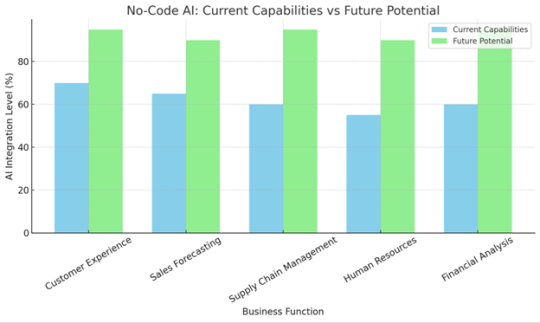
The future of no-code AI is incredibly promising, with rapid growth expected across all areas and industries. As tools become more intuitive and powerful, organizations of every size are beginning to harness AI without the need for technical expertise. From marketing and operations to finance and HR, no-code AI is opening the door to smarter automation, faster insights, and more agile decision-making. This widespread adoption signals a major shift toward a future where intelligent technology becomes a core part of everyday business processes.
“Every company is now a software company. No-code AI just makes that statement even more true.”
— Satya Nadella (CEO of Microsoft)
Where No-Code AI is Headed
As powerful as today’s no-code AI platforms are, they are only the beginning. Looking ahead, several emerging developments are set to expand the capabilities and impact of these tools even further.
1. Integration with Business Intelligence (BI) Tools
The next wave of no-code AI platforms will integrate more seamlessly with popular BI tools like Tableau, Power BI, and Looker. Users will be able to build AI models directly within their dashboards, combining traditional analytics with predictive intelligence in one unified interface.
2. Natural Language Interfaces
We are moving toward a world where building AI models could be as simple as typing or speaking a request. "Show me the top factors influencing customer churn" or "Predict next quarter’s sales by region" are the kinds of prompts that will drive AI actions behind the scenes. Natural language processing will enable deeper interaction between humans and machines in a way that feels intuitive and conversational.
3. Automated Compliance and Ethics Features
As AI regulations and ethical concerns gain traction, future no-code platforms will include built-in features to flag bias, ensure fairness, and maintain compliance. These tools will provide transparency into how models make decisions and give users greater control over model governance.
4. Domain-Specific Solutions
We’ll see an explosion of industry-specific no-code AI platforms tailored to healthcare, legal services, education, and manufacturing. These vertical tools will come preloaded with templates, datasets, and model architectures optimized for each domain, reducing the time to value even further.
5. Hyperautomation through AI-Driven Workflow Orchestration
No-code AI will increasingly become the engine behind hyperautomation initiatives where entire end-to-end business processes are automated using AI, machine learning, robotic process automation (RPA), and digital decisioning. These systems will not only execute workflows but learn and optimize them continuously over time.
Overcoming the Challenges
Despite its many advantages, no-code AI is not without challenges. Organizations must navigate a few key obstacles to unlock its full potential:
Data Quality and Accessibility: AI is only as good as the data it is trained on. Ensuring clean, relevant, and accessible data is essential for success.
User Education: While these tools require no coding, they still demand a certain level of data literacy. Businesses must invest in training and support to empower users to use no-code AI responsibly and effectively.
Model Governance: As more non-technical users build and deploy AI models, organizations need clear guidelines for version control, model approval, and performance monitoring.
Security and Privacy: With increased access to data and automation capabilities, maintaining strong security practices and compliance with data protection regulations becomes even more important.
Why Businesses Can’t Afford to Wait
The writing is on the wall: no-code AI is not a gimmick or a temporary shortcut; it is a fundamental shift in how organizations build intelligence into their operations. Early adopters are already reaping the benefits: faster decision-making, lower costs, higher efficiency, and increased innovation.
Organizations that embrace AI-driven data workflow automation and empower their teams with no-code AutoML for data analysis will spend less time battling internal bottlenecks and more time delivering value to customers.
More importantly, they will foster a culture of advancement, where ideas can be tested quickly, feedback loops are accelerated, and anyone with curiosity and drive can become a problem-solver.
A Smarter, Faster Future is Within Reach
The future of no-code AI is bright, dynamic, and packed with opportunity. As tools become more powerful and user-friendly, we will witness a world where building AI is no longer the privilege of the few, but the everyday skill of the many.
AI-driven data workflow automation will become a staple in business strategy, helping organizations respond to change with agility and confidence. No-code AutoML for data analysis will be the default approach for teams seeking fast, actionable insights.
As the lines between tech-savvy and business-savvy continue to blur, the next generation of leaders will not only understand data, they’ll be able to harness it, shape it, and turn it into real-world impact.
Learn more about DataPeak:
#factr#agentic ai#machine learning#artificial intelligence#technology#datapeak#saas#ai#ai-driven business solutions#machine learning for workflow#automation#artificialintelligence#ai solutions for data driven decision making#ai business tools#aiinnovation#datadrivendecisions#data driven decision making#data analytics#futuretech#ai platform for business process automation#ai driven business solutions#ai business solutions#dataanalytics#digital technology#digitaltools#digital trends
0 notes
Text
I Tested Every Major AI Tool for 6 Months - Here's What Actually Works
Twelve months ago, I was drowning in work. Like most business owners, I was wearing too many hats, juggling too many clients, and feeling like I was always one step behind. That’s when I decided to dive headfirst into the AI revolution everyone was talking about. But here’s the thing – I didn’t want to just dabble. I wanted to really understand what these tools could do for someone like me. So I…
#AI automation tools small business#AI productivity tools save time money#AI SEO tools 2025 comparison#AI task agents for business automation#AI tools content creation business#AI tools for business 2025#AI tools productivity increase ROI#AI workflow automation real results#best AI productivity tools#business AI tools that actually work#ChatGPT Claude Gemini Deepseek review#ChatGPT vs Claude comparison#I tested AI tools for 6 months results#small business AI automation tools
0 notes